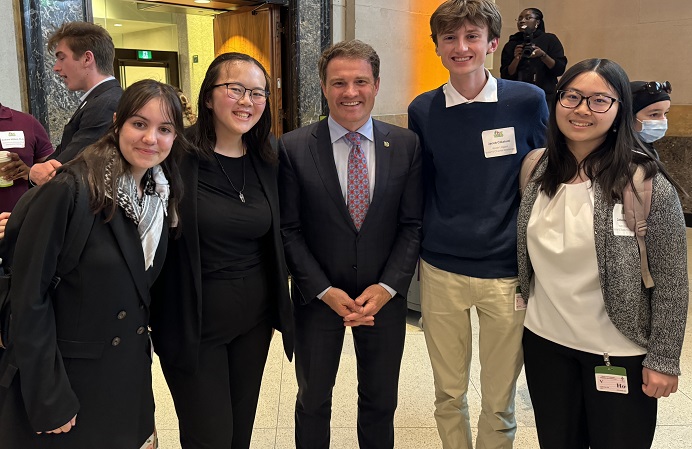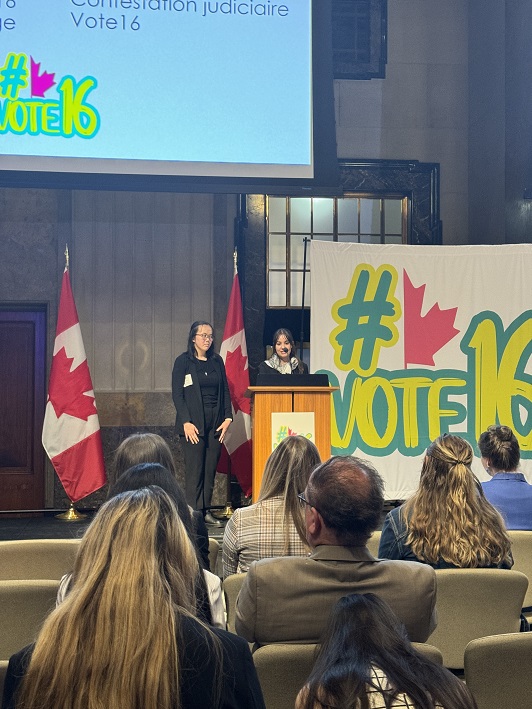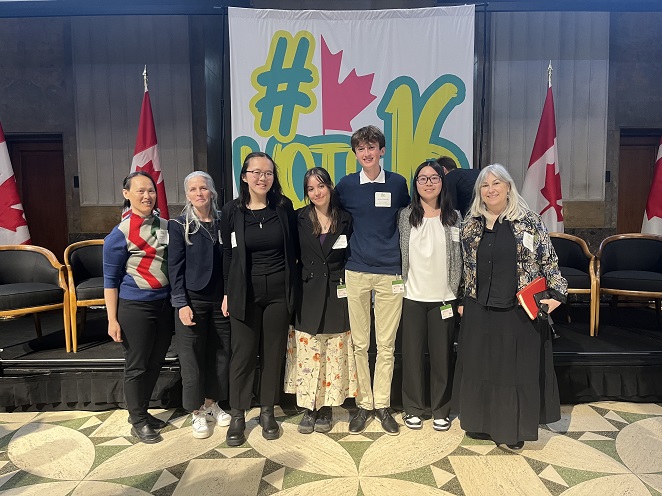by Kailyn Johnson
In a 5-4 split, the Supreme Court of Canada upheld the constitutionality of sections 742.1(c) and 742.1(e)(ii) of the Canadian Criminal Code (R v Sharma, 2022 SCC 39 at paras 2-4 [Sharma]). These sections of the Criminal Code, which were amended in 2012, limit access to conditional sentences for certain classes of offences.[1]
Ms. Cheyenne Sharma challenged the constitutionality of the two provisions under sections 7 and 15(1) of the Canadian Charter of Rights and Freedoms (the Charter). She argued that the provisions were unconstitutional under section 7 of the Charter because they arbitrarily and overbroadly limit the freedom of offenders (Sharma at para 85). Additionally, she asserted that the legislation was unconstitutional under section 15(1) of the Charter because it disproportionately and negatively affects Indigenous offenders (Sharma at para 72). This, she contended, violates the right to equality before the law, derived from section 15(1). Ms. Sharma is of Ojibwa ancestry and a member of the Saugeen First Nation (Sharma at para 5).
In 1996, Parliament introduced section 742.1 of the Criminal Code, creating the framework of the conditional sentence. The bill also included section 718.2(e) of the Criminal Code which instructed courts to consider alternatives to imprisonment, appropriate under the circumstances, “with particular attention to the circumstances of Aboriginal offenders” (Sharma at para 130). Both these provisions were designed to address Indigenous over-incarceration in Canadian prisons. The 2012 amendments, however, reduced judges’ discretion in limiting prison sentences for Indigenous offenders.
Background on the case
In 2015, Ms. Sharma was caught smuggling nearly 2 kilograms of cocaine into a Toronto airport. Ms. Sharma pleaded guilty to importing a controlled substance and was sentenced to 18 months in prison (Sharma at para 81). Ms. Sharma seemed to be an ideal candidate for a conditional sentence (Sharma at para 224). She had no previous criminal record. At only 20 years old, Ms. Sharma was her child’s sole provider. At the time of the offence, Ms. Sharma had little support and no financial resources. She was on the verge of eviction. She had smuggled the drugs after her then-partner offered her $20,000 to transport them from Suriname to Toronto, where she was apprehended (Sharma at para 5-6, 116).
Furthermore, a Gladue report revealed that Ms. Sharma was subject to tremendous intergenerational trauma.[2] Her grandmother was a residential school survivor. Her mother had been placed in foster care. Ms. Sharma herself had been assaulted, forced to drop out of school, and struggled with substance abuse (Sharma at para 6, 121). At the time of sentencing, Ms. Sharma had moved to reserve lands and was receiving help for her substance use issues while working towards her high school diploma (Sharma at para 121). Ms. Sharma’s circumstances and the Indigenous over-incarceration crisis were a few of many compelling reasons for Ms. Sharma to complete her sentence in the community rather than in prison.
Procedural History
The trial judge determined that Ms. Sharma was ineligible for a conditional sentence due to the 2012 amendment, 742.1(c). This amendment prohibits offenders who are convicted of offences which carry maximum prison terms of 14 years or life, from receiving conditional sentences, even if the offender themselves receives a much shorter term. Ms. Sharma challenged the constitutionality of this provision and also 742.1(e)(ii), which prohibits offenders convicted of certain offences, including drug trafficking, from receiving a conditional sentence if the maximum penal term for the crime is 10 years or more. The trial judge dismissed her constitutional challenge under section 15 of the Charter (Sharma at para 20). At the time, Ms. Sharma did not include her section 7 challenges in oral arguments (Sharma at para 15). Ms. Sharma appealed this verdict and her sentence.
At the Ontario Court of Appeal, Ms. Sharma renewed her challenge to the legislation under both section 7 and section 15 of the Charter. The majority of the court struck down the provisions as unconstitutional (Sharma at para 21). They held that both provisions were overbroad under section 7 of the Charter and impermissible under section 15(1) because they discriminated against Indigenous offenders (Sharma at paras 22-23). The Crown appealed to the Supreme Court of Canada.
Majority at the Supreme Court of Canada
The majority of the Supreme Court of Canada held that sections 742.1(c) and 742.1(e)(ii) are constitutional under section 7 of the Charter. While the amendments do inhibit “the right to life, liberty, and security of the person” guaranteed by section 7, through imprisonment, they do so in “accordance with the principles of fundamental justice” (Sharma at para 85). The statutes are neither arbitrary nor overbroad.
The majority also upheld sections 742.1(c) and 742.1(e)(ii) as constitutional under section 15 of the Charter. Section 15(1) guarantees:
- (1) Every individual is equal before and under the law and has the right to the equal protection and equal benefit of the law without discrimination and, in particular, without discrimination based on race, national or ethnic origin, colour, religion, sex, age or mental or physical disability.
The majority concluded that Ms. Sharma failed to meet the evidentiary burden required for a successful section 15 challenge. To succeed, Ms. Sharma would need to show 1) that the legislation disproportionately affected Indigenous people and 2) the disproportionate effects of the legislation reinforce, exacerbate, perpetuate, or create disadvantage. The Court found that Ms. Sharma failed to produce evidence which showed the legislation disproportionately impacts Indigenous offenders (Sharma at para 67, 76). The majority found that “historic or systemic disadvantage” alone was not enough to establish the disproportionate impact of this specific legislation on Indigenous offenders (Sharma at para 71). The analysis emphasizes a requirement to show causation through evidence that the impugned law “created or contributed to” the disproportional impact on the claimant group (Sharma para 45). Both amendments were upheld under section 15 because the arguments failed step one of the test due to the lack of evidence of causation.
Dissent at the Supreme Court of Canada
Four justices of the Supreme Court dissented to the majority holding in Sharma. Karakatsanis J., writing for the dissent, found both provisions unconstitutional, breaching both section 7 and section 15(1) of the Charter. Section 7 was breached because the revisions are overbroad (Sharma at para 118). By using the maximum sentence of a crime as a proxy for its seriousness, the legislation captures not only serious offenders but also offenders whose crimes were only potentially serious (at para 164). For example, if two offenders are convicted of the same crime, both will share the same maximum sentence. Yet the offender sentenced to only 1 year in prison has only committed a potentially serious crime, while the offender sentenced to 14 years imprisonment has committed a serious crime. Despite the differences in severity and actual penal term, both are barred from conditional sentencing by the same provision. Thus, the legislation captures offenders outside its intended scope (serious crimes) and is therefore overbroad.
The dissent also held that both 742.1(c) and 742.1(e)(ii) are unconstitutional under section 15(1). The dissent recognizes that Indigenous over-incarceration is a result of Canada’s colonial history (Sharma at para 114). While sentencing laws cannot change this past or heal the social issues leading to over-incarceration, they are uniquely positioned to address or exacerbate the effects.
The dissent applies the same test as the majority but states that the majority’s clarification “seek[s] to revise the test” and “resurrect[s] their rejected arguments in Alliance and Fraser” contrary to stare decisis” (Sharma at para 204). The dissent observes that facially equal treatment under the law may lead to unequal results (Sharma at para 187). The Gladue framework was specifically designed to combat this issue. By considering Indigenous circumstances during sentencing decisions, the courts were working towards achieving substantive equality. The amendments to section 742, however, limit access to conditional sentences and other remedial tools. While the legislation applies to all offenders, it distinguishes by race because it prevents Indigenous offenders from using the Gladue framework (Sharma at para 233). The legislation thus compels judges to give harsh prison sentences to Indigenous offenders where a lesser sentence may otherwise have been appropriate because of Gladue principles. Only Indigenous offenders are impacted in this way and imposing prison sentences exacerbate historic and systemic disadvantages (Sharma at para 237). Therefore, the dissent finds that the statutes are unconstitutional under section 15 of the Charter.
Impacts of the Sharma decision
There were 21 interveners in the Sharma case at the Supreme Court of Canada level. In its factum, the David Asper Centre for Constitutional Rights (“Asper Centre”) argued that, because the criminal justice system plays a causal role in the disadvantage of Indigenous peoples, section 15 of the Charter imposes a positive remedial duty (Factum of the Intervener the David Asper Centre for Constitutional Rights at para 1). The majority of the Court dismissed this argument, finding that “15(1) does not impose a general, positive obligation on the state to remedy social inequalities or enact remedial legislation” (Sharma at para 63). Chris Rudnicki, a criminal lawyer and lecturer at Lincoln Alexander School of Law, called this particular result “profoundly disappointing.”[3]
In their factum at the Court of Appeal, the Women’s Legal Education and Action Fund (“LEAF”) and the Asper Centre submitted evidence from Statistics Canada and government reports of the growing rates of over-incarceration of Indigenous people in Canada. From 2007/2008 to 2017/2018, admissions of Indigenous men to prison increased 28%. Admission of Indigenous women to custody increased 60%. Indigenous incarceration rates are also grossly disproportionate. Indigenous people make up only 4% of the Canadian adult population, yet they account for 30% of all admissions to provincial and territorial custody (Factum of the Interveners Women’s Legal Education and Action Fund and the David Asper Centre for Constitutional Rights at para 8). The statistical evidence included in the intervening submissions confirms the conclusions of the Ontario Court of Appeal about the over-incarceration of Indigenous women.
The majority at the Supreme Court of Canada had serious concerns about the intervening parties’ submissions. “Interveners creating a new evidentiary record at the appellate level undermines the trial process” they concluded (Sharma at para 75). However, the majority of the Supreme Court failed to identify why they found it objectionable to include the intervening submissions in the evidentiary record. The decision to diminish the role of interveners, thus largely dismissing their evidence, was heavily critiqued by the dissent. This was one of the reasons the dissent found that “My colleagues’ revisions are not only unsolicited, unnecessary, and contrary to stare decisis; they would dislodge foundational premises of our equality jurisprudence. This is not “clarification”; it is wholesale revision” (Sharma at paras 205-206). Overall, LEAF feels the Sharma decision “will make future equality rights claims more difficult.”[4]
The decision has serious repercussions on Indigenous peoples, as the dissent observed. The impugned provisions force the hands of judges to impose harsher sentences on Indigenous offenders than they may have otherwise (Sharma at 238). These prison sentences are often contrary to Indigenous principles of justice such as community healing, reconciliation, and reintegration of the offender (Sharma at para 214, 240). They also remove Indigenous people from their community, family, and culture, thereby stripping them of their support (Sharma at para 240). The decision fails to realize the objectives of section 718.2(e), to consider sentences alternative to prison terms, “with particular attention to the circumstances of Aboriginal offenders.” Sharma fails to meaningfully address Indigenous over-incarceration. The continued enforcement of 742.1(c) and 742.1(e)(ii) may reinforce cycles of intergenerational trauma.
While reactions to the Court’s decision were largely negative,[5] Ms. Sharma’s lawyer, Nader Hasan, LEAF, and many others are using this as a rallying cry to pass Bill C-5.[6] If enacted, Bill C-5 would amend both the Criminal Code and the Controlled Drugs and Substances Act, repealing mandatory minimum sentences for a variety of offences. This would allow for greater judicial discretion when assessing the individual circumstances of offenders during sentencing as well as to increase the usage of conditional sentences. These proposed changes are designed to curb the over-incarceration of Black and Indigenous people in Canadian prisons.[7]
Kailyn Johnson is a 1L JD candidate at the Faculty of Law and is a member of the Asper Centre’s Consent and Constitution student working group.
[1] Conditional sentences are an alternative to serving a term in prison. Instead, individuals who meet legislative criteria and are not deemed a safety threat to their communities can serve their sentence in the community, under surveillance, with specific requirements.
[2] Gladue reports collect relevant personal information on Indigenous offenders during the sentencing stage of a trial. These reports are used to tailor a prison sentence to suit both the individual circumstances of the offender as well their community. This may include information on the individual’s family history, culture, hereditary laws, and values. Reintegration, reconciliation, and community healing may be special considerations when sentencing Indigenous offenders (Gladue at para 214).
[3] Chris Rudnicki, [@chrisrudnicki], ““There is no general, positive obligation on the state to remedy social inequalities or enact remedial legislation, nor is the legislature bound to its current policies.” A profoundly disappointing result in R v Sharma, 2022 SCC 39,” Twitter, 4 Nov 2022
[4] Women’s Legal Education and Action Fund, “Supreme Court decision fails to address the mass incarceration of Indigenous women and makes equality rights claims more difficult,” 4 Nov 2022, https://www.leaf.ca/news/supreme-court-decision-fails-to-address-the-mass-incarceration-of-indigenous-women-and-makes-equality-rights-claims-more-difficult/.
[5] Lisa Kerr [@coleenlisa], “This is a hard one to report. R v. Sharma. In a 5:4 decision, majority holds that Criminal Code sections that prevent conditional sentences do not limit s. 7 or s. 15 rights,” Twitter, 4 Nov 2022, Nader Hassan, [@Nader_Hassan_law], “ While today’s decision in #Sharma is beyond disappointing, the policy justification for #BillC5 is just as sound as ever. Parliament needs to address Indigenous mass incarceration,” Twitter, 4 Nov 2022,
[6] Nader Hasan, [@Nader_Hasan_law], “While today’s decision in #Sharma is beyond disappointing, the policy justification for #BillC5 is just as sound as ever. Parliament needs to address Indigenous mass incarceration,” Twitter, 4 Nov 2022; Criminal Lawyers Association, [@ClaOntario], “Today’s @SCC_eng decision in R v. Sharma drives home the importance of Bill C-5. We call on the @SenateCA to pass C-5 quickly so that judges once again have discretion to craft fit sentences that take into account experiences with #systemicracism,” Twitter, 4 Nov 2022,
[7] Department of Justice Canada, “Bill C-5: Mandatory Minimum Penalties to be repealed,” 7 Dec 2021, https://www.canada.ca/en/department-justice/news/2021/12/mandatory-minimum-penalties-to-be-repealed.html.
![]() By Vlad Mirel and Kate Shackleton
By Vlad Mirel and Kate Shackleton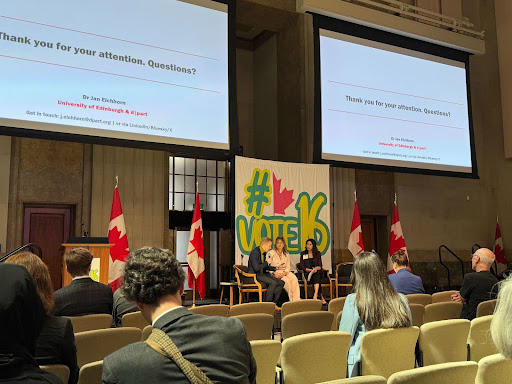
![]()
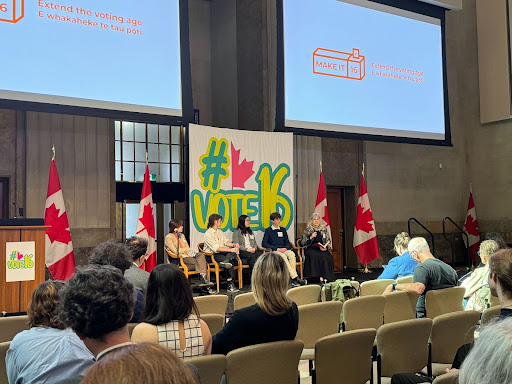
![]()
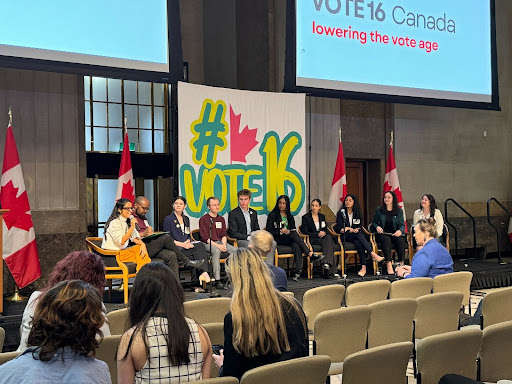
![]()
